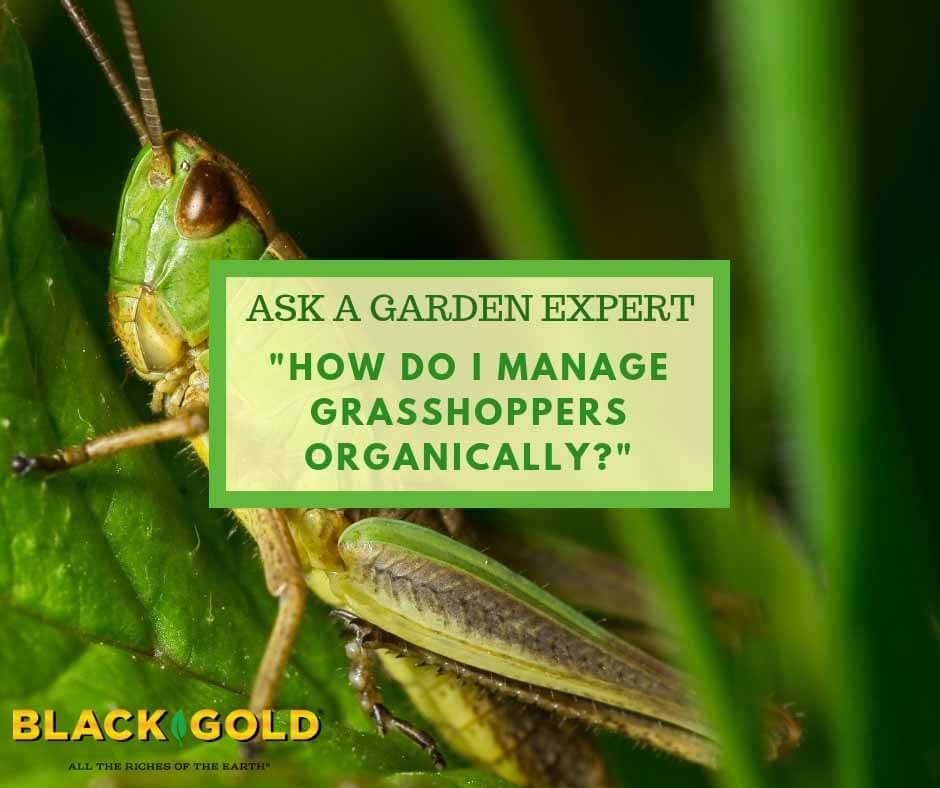
“What’s the best way to deal with grasshoppers in the garden organically?” Question from Chamisa or Ramona, California
Answer: Grasshoppers (Melanoplus spp.) are severe garden pests in most parts of the United States and difficult to manage. Populations tend to boom in eight- to ten-year cycles, and when they are bad, they are bad. Their swarms are very overwhelming, but there is hope. It’s just a matter of understanding their limitations and our limitations as gardeners.
Grasshopper Life Cycle
Grasshopper females lay their eggs two inches down in the soil in the late summer or fall. They tend to lay eggs in undisturbed natural areas rather than garden soils, which disables gardeners from managing them in their home turf. Each egg case may contain 20 to 100 grasshoppers waiting to hatch. In spring, once the soil warms, they emerge.
Grasshoppers are chewing insects that will feed on just about anything green, but they tend to prefer new, tender garden edibles and plants, such as carrots, lettuce, corn, and annual flowers. As they grow to adulthood they become more and more damaging and can consume whole plants quickly. Out West, they do the most damage for about a month in early summer when wildland plants start to dry up in the arid weather.
Grasshopper Management Challenges
Pesticides, organic or non-organic, are not that effective on grasshoppers, so don’t waste your time with them. Crop covers can be effective, but very hungry grasshoppers can chew through plastic covers if they are hungry enough. Overall, when populations are high, gardeners are limited in what they can do to protect all their tender edibles.
Grasshopper Management Options
Here are several options for managing grasshoppers in the garden.
- Plant crops that grasshoppers are more likely to avoid. Like deer, they will eat just about anything when they are swarming and hungry, but in lower populations, they are reported to avoid cilantro, squash, zucchini, watermelon, peas, and the leaves of tomatoes and eggplants. Tough, armored ornamental succulents, like agave and cacti, are also resistant.
- Cover tender plants with thick window screening until the grasshoppers are gone. Grasshoppers can chew through most standard row covers, but they can’t chew through metal window screenings. Just be sure to secure the edges well, so they can’t get around the cover.
- Plant trap crops. Grasshoppers favor tender grasses, so if you nurture a nice swath of tall grass away from your garden, they will be attracted to it and more likely to avoid your garden plants.
- Handpick them in years when they are few.
- Set baits containing the protozoan Nosema locustae. This protozoan bait is OMRI Listed and kills grasshoppers but does not harm humans.
- Keep chickens and guinea fowl. If you have space and inclination, farm fowl will happily eat away at your grasshopper populations.
I hope that these tips help.
Happy gardening,
Jessie Keith
Black Gold Horticulturist

